Relationship between ABCB1 3435TT genotype and antiepileptic drugs resistance in Epilepsy: updated systematic review and meta-analysis
- PMID: 28202008
- PMCID: PMC5311838
- DOI: 10.1186/s12883-017-0801-x
Relationship between ABCB1 3435TT genotype and antiepileptic drugs resistance in Epilepsy: updated systematic review and meta-analysis
Abstract
Background: Antiepileptic drugs (AEDs) are effective medications available for epilepsy. However, many patients do not respond to this treatment and become resistant. Genetic polymorphisms may be involved in the variation of AEDs response. Therefore, we conducted an updated systematic review and a meta-analysis to investigate the contribution of the genetic profile on epilepsy drug resistance.
Methods: We proceeded to the selection of eligible studies related to the associations of polymorphisms with resistance to AEDs therapy in epilepsy, published from January 1980 until November 2016, using Pubmed and Cochrane Library databases. The association analysis was based on pooled odds ratios (ORs) and 95% confidence intervals (CIs).
Results: From 640 articles, we retained 13 articles to evaluate the relationship between ATP-binding cassette sub-family C member 1 (ABCB1) C3435T polymorphism and AEDs responsiveness in a total of 454 epileptic AEDs-resistant cases and 282 AEDs-responsive cases. We found a significant association with an OR of 1.877, 95% CI 1.213-2.905. Subanalysis by genotype model showed a more significant association between the recessive model of ABCB1 C3435T polymorphism (TT vs. CC) and the risk of AEDs resistance with an OR of 2.375, 95% CI 1.775-3.178 than in the dominant one (CC vs. TT) with an OR of 1.686, 95% CI 0.877-3.242.
Conclusion: Our results indicate that ABCB1 C3435T polymorphism, especially TT genotype, plays an important role in refractory epilepsy. As genetic screening of this genotype may be useful to predict AEDs response before starting the treatment, further investigations should validate the association.
Keywords: ABCB1 C3435T polymorphism; Antiepileptic drugs; Epilepsy; Meta-analysis; Resistance.
Figures
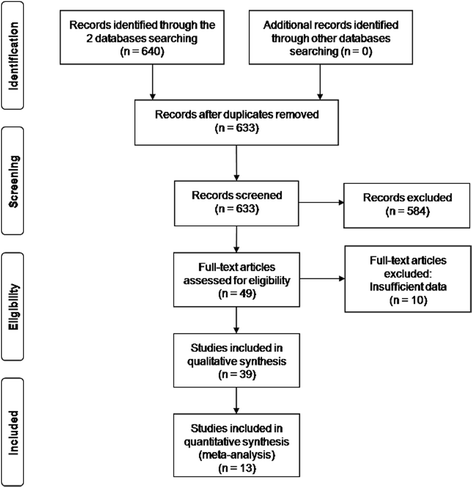
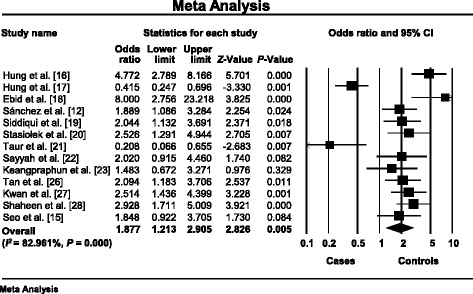

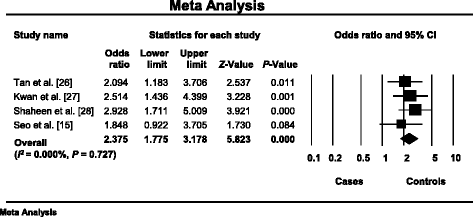
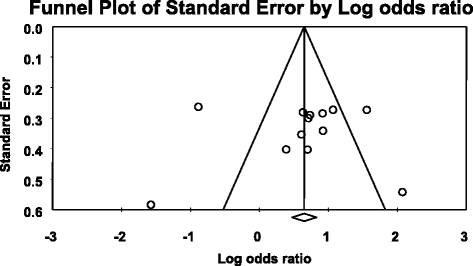
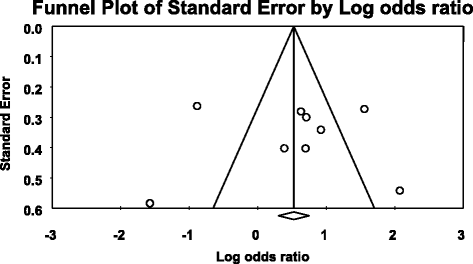
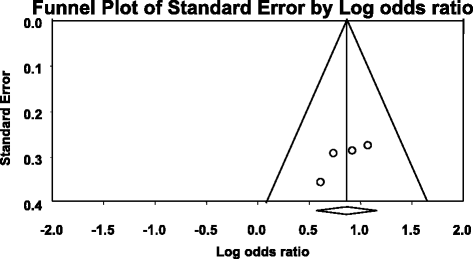
Similar articles
-
ABCB1 C3435T polymorphism and the risk of resistance to antiepileptic drugs in epilepsy: a systematic review and meta-analysis.Seizure. 2010 Jul;19(6):339-46. doi: 10.1016/j.seizure.2010.05.004. Epub 2010 Jun 3. Seizure. 2010. PMID: 20605481
-
Carbamazepine versus phenytoin monotherapy for epilepsy: an individual participant data review.Cochrane Database Syst Rev. 2017 Feb 27;2(2):CD001911. doi: 10.1002/14651858.CD001911.pub3. Cochrane Database Syst Rev. 2017. Update in: Cochrane Database Syst Rev. 2019 Jul 18;7:CD001911. doi: 10.1002/14651858.CD001911.pub4. PMID: 28240353 Free PMC article. Updated.
-
Lamotrigine versus carbamazepine monotherapy for epilepsy: an individual participant data review.Cochrane Database Syst Rev. 2018 Jun 28;6(6):CD001031. doi: 10.1002/14651858.CD001031.pub4. Cochrane Database Syst Rev. 2018. PMID: 29952431 Free PMC article.
-
Clinical effectiveness, tolerability and cost-effectiveness of newer drugs for epilepsy in adults: a systematic review and economic evaluation.Health Technol Assess. 2005 Apr;9(15):1-157, iii-iv. doi: 10.3310/hta9150. Health Technol Assess. 2005. PMID: 15842952
-
Treatments for seizures in catamenial (menstrual-related) epilepsy.Cochrane Database Syst Rev. 2021 Sep 16;9(9):CD013225. doi: 10.1002/14651858.CD013225.pub3. Cochrane Database Syst Rev. 2021. PMID: 34528245 Free PMC article.
Cited by
-
Lack of association between valproic acid response and polymorphisms of its metabolism, transport, and receptor genes in children with focal seizures.Neurol Sci. 2019 Mar;40(3):523-528. doi: 10.1007/s10072-018-3681-y. Epub 2018 Dec 18. Neurol Sci. 2019. PMID: 30564963
-
Possible Genetic Determinants of Response to Phenytoin in a Group of Colombian Patients With Epilepsy.Front Pharmacol. 2020 May 7;11:555. doi: 10.3389/fphar.2020.00555. eCollection 2020. Front Pharmacol. 2020. PMID: 32457604 Free PMC article.
-
Multi-omic strategies applied to the study of pharmacoresistance in mesial temporal lobe epilepsy.Epilepsia Open. 2022 Aug;7 Suppl 1(Suppl 1):S94-S120. doi: 10.1002/epi4.12536. Epub 2021 Oct 18. Epilepsia Open. 2022. PMID: 34486831 Free PMC article. Review.
-
mPEG-PLA/TPGS mixed micelles via intranasal administration improved the bioavailability of lamotrigine in the hippocampus.Int J Nanomedicine. 2017 Nov 21;12:8353-8362. doi: 10.2147/IJN.S145488. eCollection 2017. Int J Nanomedicine. 2017. PMID: 29200847 Free PMC article.
-
[Association between single nucleotide genetic polymorphisms in ABC transporter genes with drug-resistant epilepsy in the Spanish population].Rev Neurol. 2022 Nov 1;75(9):251-259. doi: 10.33588/rn.7509.2022133. Rev Neurol. 2022. PMID: 36285445 Free PMC article. Spanish.
References
Publication types
MeSH terms
Substances
LinkOut - more resources
Full Text Sources
Other Literature Sources
Medical
Research Materials

